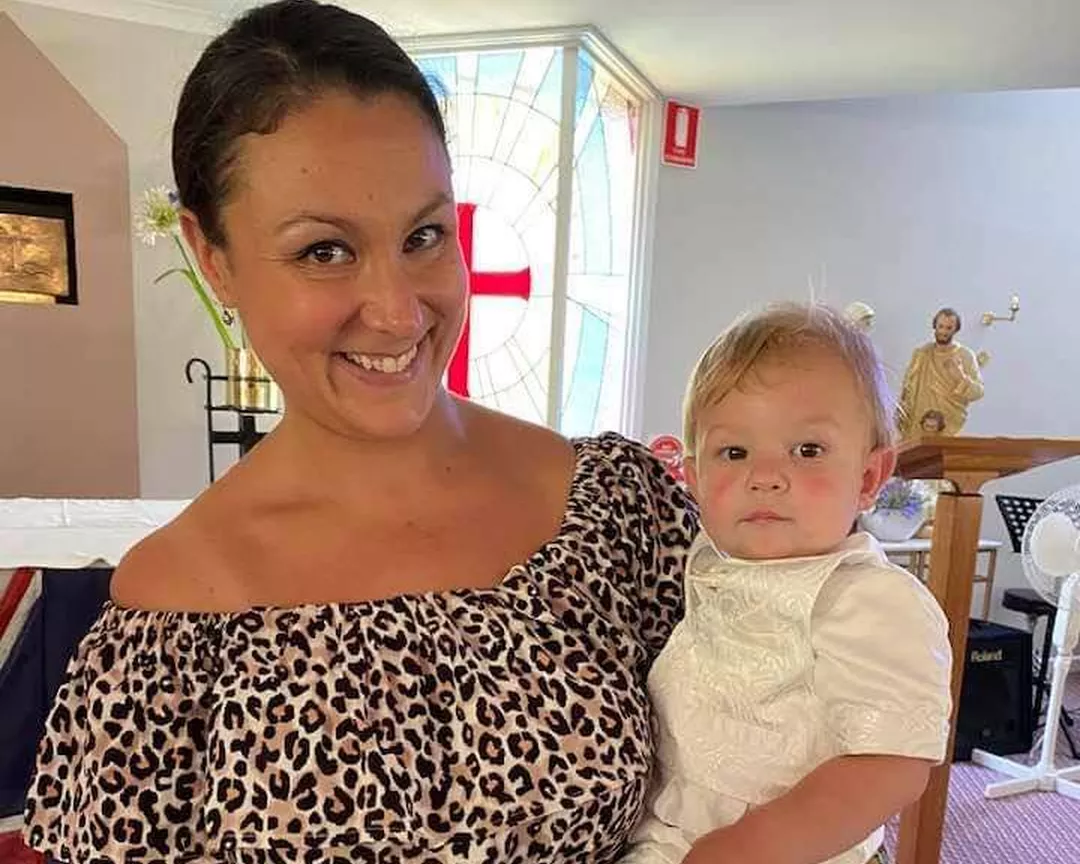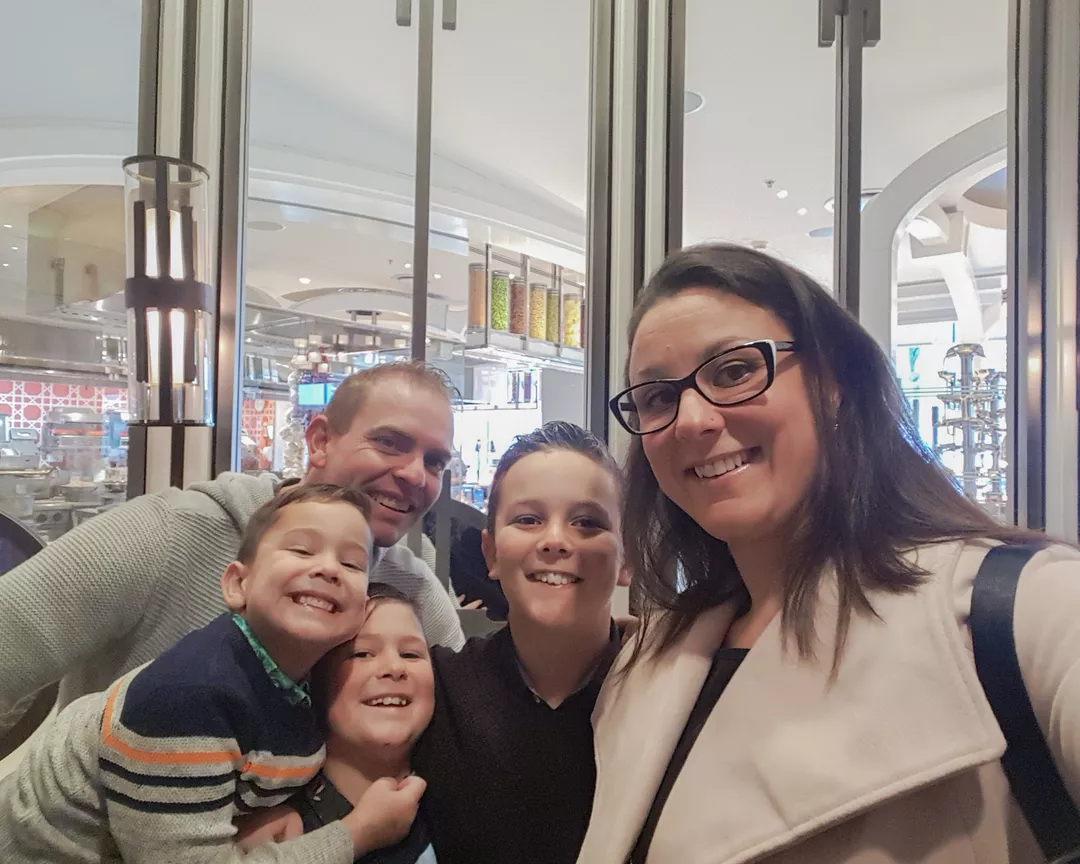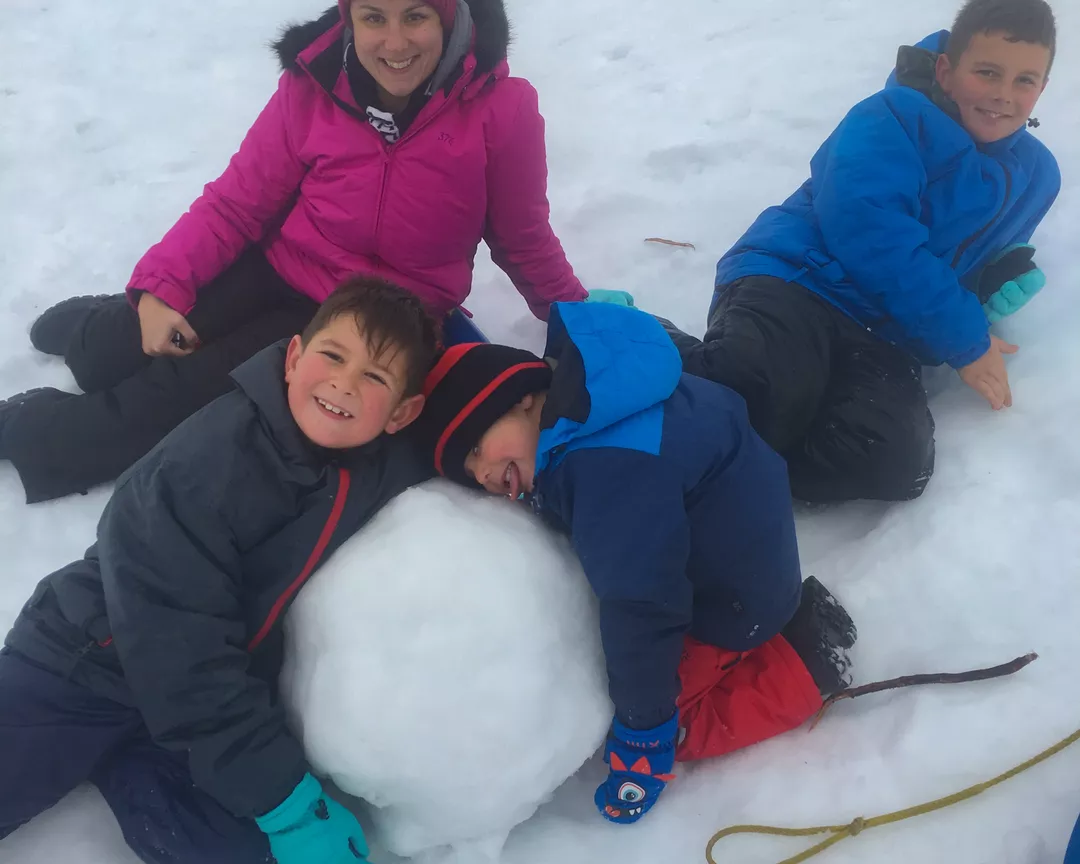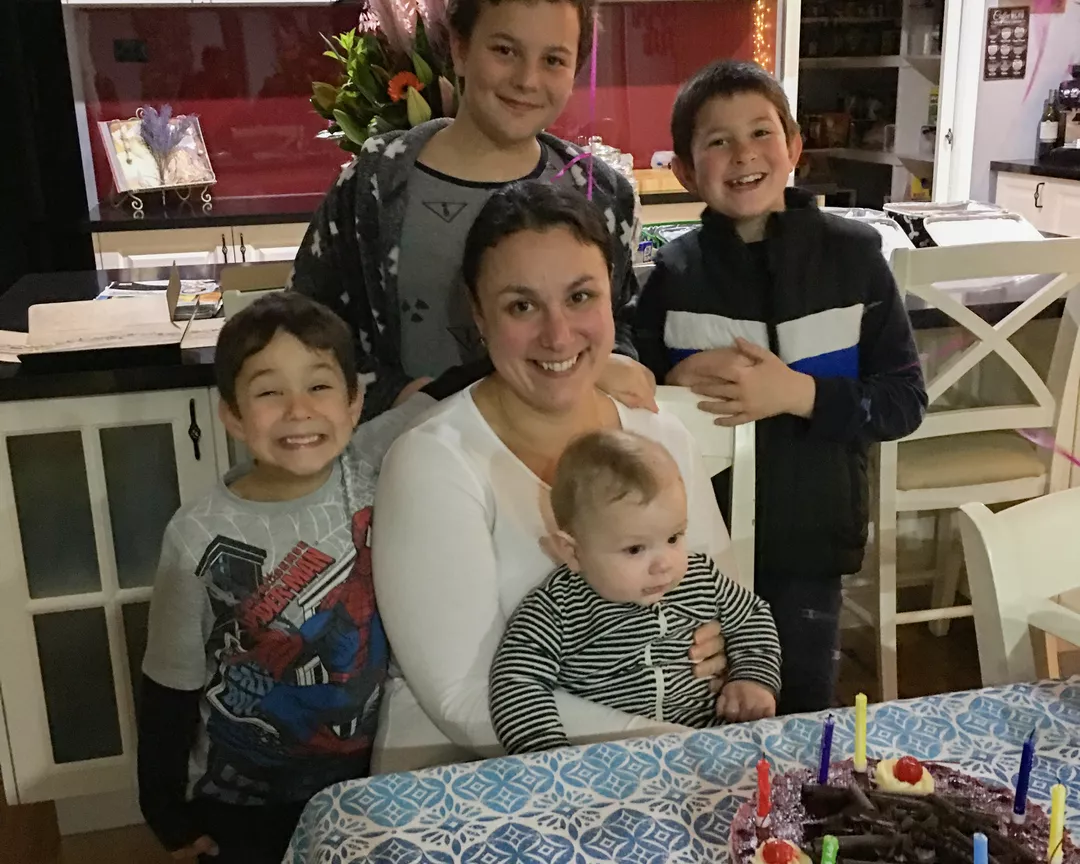When Sarah suffered a stroke at age 33, in the middle of the coronavirus pandemic, the doctors told her, “It’s just bad luck”.
As the mother of three active young boys and a baby, Sarah is used to having her sleep interrupted. So when she woke early one Monday with an intense headache and almost no peripheral vision, she brushed it off as tiredness. She had no idea that in five hours she would be in hospital.
When the problems lingered into the morning, Sarah visited her GP, who recommended getting an MRI scan and seeing an ophthalmologist. It was the ophthalmologist who sounded the alarm of a potential stroke. Just hours later, Sarah was in the hospital emergency department undergoing a barrage of tests and being put on a regimen of treatment – which could have made all the difference. Early treatment for stroke is critical. The longer a stroke and the blood clot causing it remains untreated, the greater the chance of permanent stroke-related brain damage.
Sarah remembers, “All I could think about when I was in hospital were the kids, and knowing the seriousness of a stroke."
Eventually, Sarah was diagnosed with early onset ischaemic stroke to the occipital lobe of the brain – the lobe that controls the ability to see things – caused by a right vertebrae arterial dissection. It’s frightening terminology, but something Sarah has had to get used to, along with a myriad of limitations as she works on her recovery.
“I only have partial vision now, so getting used to that was horrible. I found that I was ultra-sensitive to light and sounds. Just walking myself a few metres was scary, not knowing if I might trip over something or someone. I’d get out of bed slow and steady, as I sometimes felt a little dizzy and off balance.”
Recovering from a stroke is difficult in the best of times. Just two weeks after her stroke, Sarah’s city went into lockdown to manage rising cases of COVID-19.
“Stroke is a very real, very scary and lonely journey, and it’s been so much more difficult during COVID, doing it alone except for my husband. I had to home school our three sons, look after our baby and tend to all the other day-to-day tasks around the home. I now had so many limitations, physically but mentally as well.”
Sarah struggled with, among other things, lower tolerance levels, trouble focusing even on the smallest of tasks, constant tiredness and frequent ‘brain fog’, where she would lose her train of thought and words.
Eventually, Sarah was able to put her recovery first. “Nobody can prepare you for the massive journey and roller coaster ride of emotions. There is the normal physical recovery, but the emotional recovery is something else."
“Given the reality of an invisible disability, it’s easy for others to misjudge a situation or misunderstand the full extent of the limitations I have now. So it’s been a huge part of the healing process on an emotional level to learn how best to deal with those sorts of situations. I’m really just still trying to navigate who I am and my new set of limitations. A little patience and kindness goes a long way. No amount of love and support for a struggling stroke survivor is too much or too little. We want it. We need it.”
For Sarah, it’s now also important to spread awareness about the need for stroke research as well as the impact stroke can have.
“Further medical research is giving future stroke patients a real fighting chance of not just survival but fewer side effects. Stroke doesn’t just happen to the elderly; it happens to so many of the younger community. We also need to further educate everyone of the lesser-known signs and symptoms of stroke. My stroke demonstrates there are many other red flags, like headaches and visual problems.”
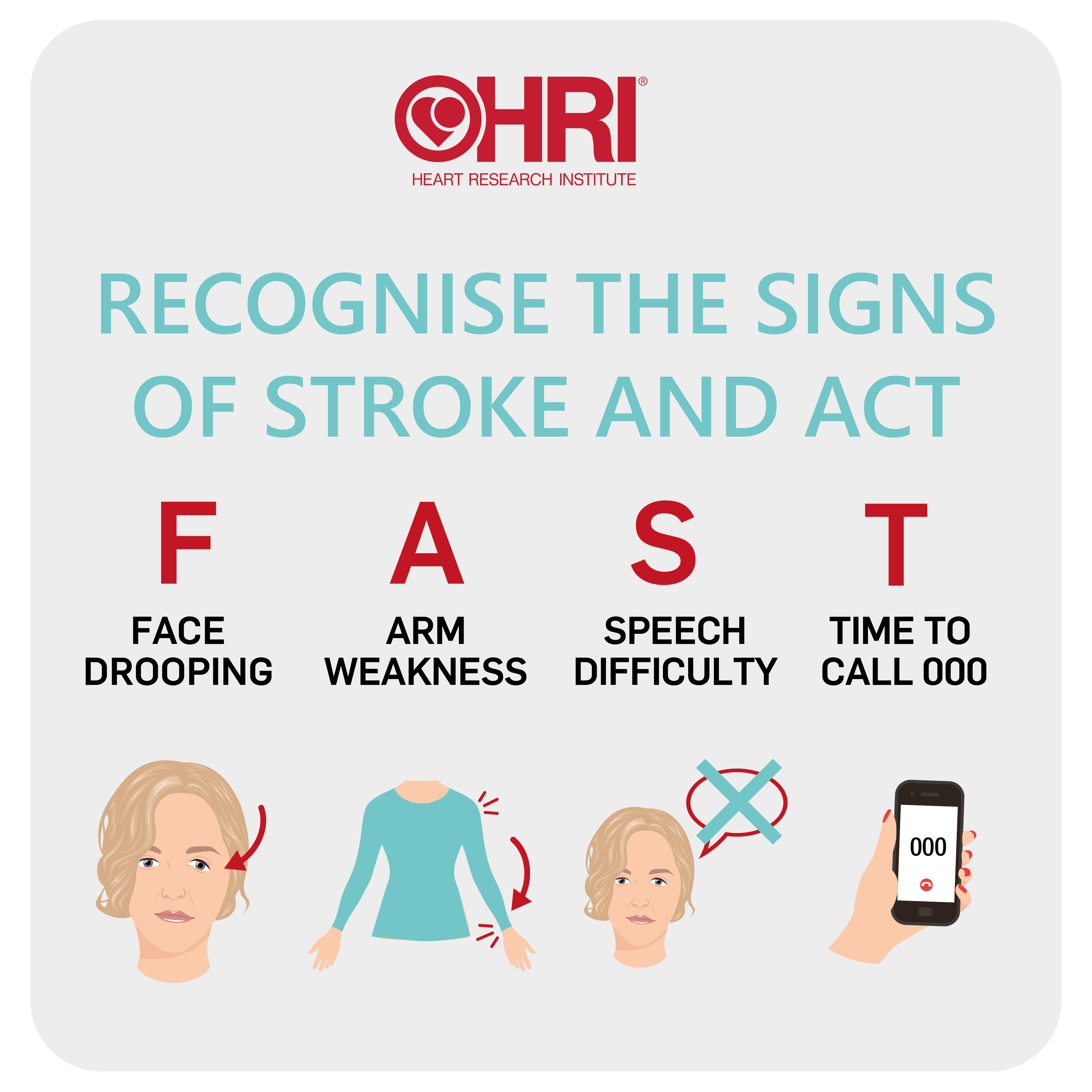
Despite the difficulties of living with her stroke, Sarah is optimistic about the future and grateful every day to have been given another opportunity to prove her strength and resilience.
“Although I know I’ll most likely need to be on medication for the rest of my life, I remain as healthy and active as I can. I continue to be a happy and positive role model for my children. Knowing time is everything, I could have been in a far worse situation,” Sarah says.
How is HRI helping?
Pioneering research by our Thrombosis Research Group is focused on finding safer, more effective therapies to treat ischaemic stroke. Studies by HRI scientists have already discovered a novel drug class that can safely reduce dangerous blood clotting. They will test this novel drug in combination with thrombolysis to improve the dissolution of damaging blood clots that block blood flow to the brain. The ultimate aim of these studies is to reduce brain damage and improve outcomes post stroke-recovery.

